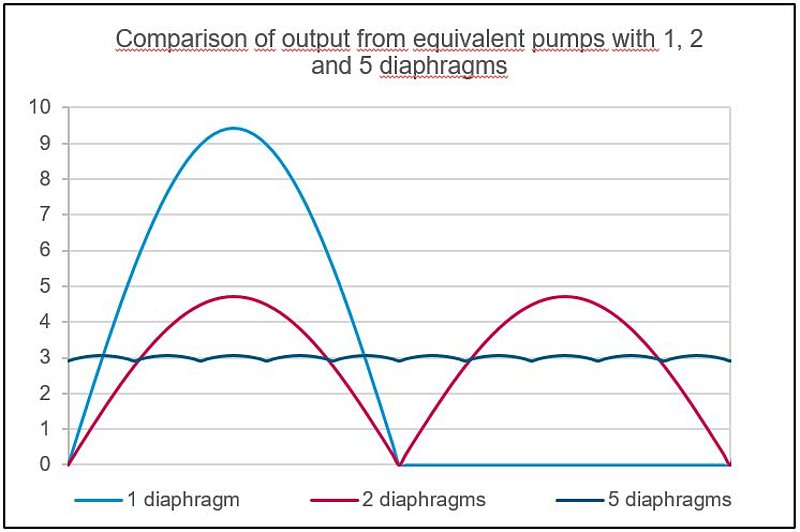Demands for High-Quality Printing Fuel the Innovation for Low-Pulsation Pumps

Inkjet printing turns a plain cardboard box into an attractive, visual piece which captures the attention and imagination of those within view. What’s inside? How can I get one? The exact questions advertising agencies desire. Corporate branding demands excellence in printing and companies like KNF rise to the challenge to provide the best OEM pumps for use in the inkjet printing equipment that powers the industry. Demands for quality are even more rigorous in the 3D bioprinting market and innovation continues to drive equipment manufacturers and OEMs, such as KNF, to collaborate and meet the challenges.
Smooth & reliable ink flow
Smooth and reliable ink flow is essential to deliver the consistent high-quality print output required by the inkjet industry. Increasingly high demands for longer run times and faster turnaround times put pressure on equipment manufacturers to innovate. Pumps are used to move ink around the ink delivery system: from reservoirs to printheads through various sizes and lengths of tubing, valves, filters, heaters and degassers. If pulsation exists it can result in undesirable pressure fluctuations at the printhead and changes in the flow of ink throughout the system. Like the negative results from stop-and-go traffic, pulsation causes an uneven flow, higher energy consumption and more wear and tear on system components. Pulsation is a physical phenomenon and our engineers are constantly working on minimizing it through innovative combinations of motors, materials, diaphragm and drives.
Gentle for sensitive inks and bioinks
Pulsation causes steep pressure peaks and an increase in the energy transferred through the system. In the inkjet industry, this energy and extreme pressure can damage sensitive inks such as those consisting of delicate pigment suspensions or those with reactions to heat, light or humidity. Low pulsation pumps work gently within the ink delivery system, eliminating pressure extremes in the fluid and reducing the likelihood of shear damage. This smooth pumping action limits the creation of extra energy and heat from cavitation, which also helps to protect UV inks from premature or dark-curing. The gentle action and low pulsation are extremely important in the emerging technology of 3D bioprinting. Sensitive bioinks made from living cells are at risk of mechanical damage from the shock of extreme pressure peaks if pulsation is not controlled.
Better for equipment components
Inkjet equipment manufacturers rely on state-of-the-art components for the systems designed to meet the quality, reliability and lifetime requirements of the competitive industry. Within the complicated network of tubing, filters, degassers, heaters, valves, printheads and controllers, a low pulsation pump is needed to reduce system vibration and damage to sensitive components.
KNF low pulsation innovation
KNF engineers have worked together with specialists in the inkjet industry to develop low pulsation pump technology to be used in ink delivery systems. One such pump, the FP 400, utilizes five diaphragms working sequentially in a continuous cycle. This combination of movement evens the pressure and makes the pumping process much smoother.
Linear adjustment of flow is another strong feature of the new pump. It offers an outstanding linearity between 10% and 100% of the nominal flow rate.
The FP 400 pump can deliver up to 5 l/min (depending on version) to meet the higher recirculation volumes required by modern printers which utilize a greater number (up to 36) printheads per color bar.
The low pulsation feature, coupled with the material options available for chemical and abrasion resistance, make the FP 400 pump a welcome solution for a wide variety of printing applications. KNF engineers continue to innovate for pump solutions and their success in the rapidly changing inkjet and medical bioprinting industries.
Here you can find a short video that illustrates, how the FP 400 pump avoids pulsation and the associated formation of bubbles in liquids:



